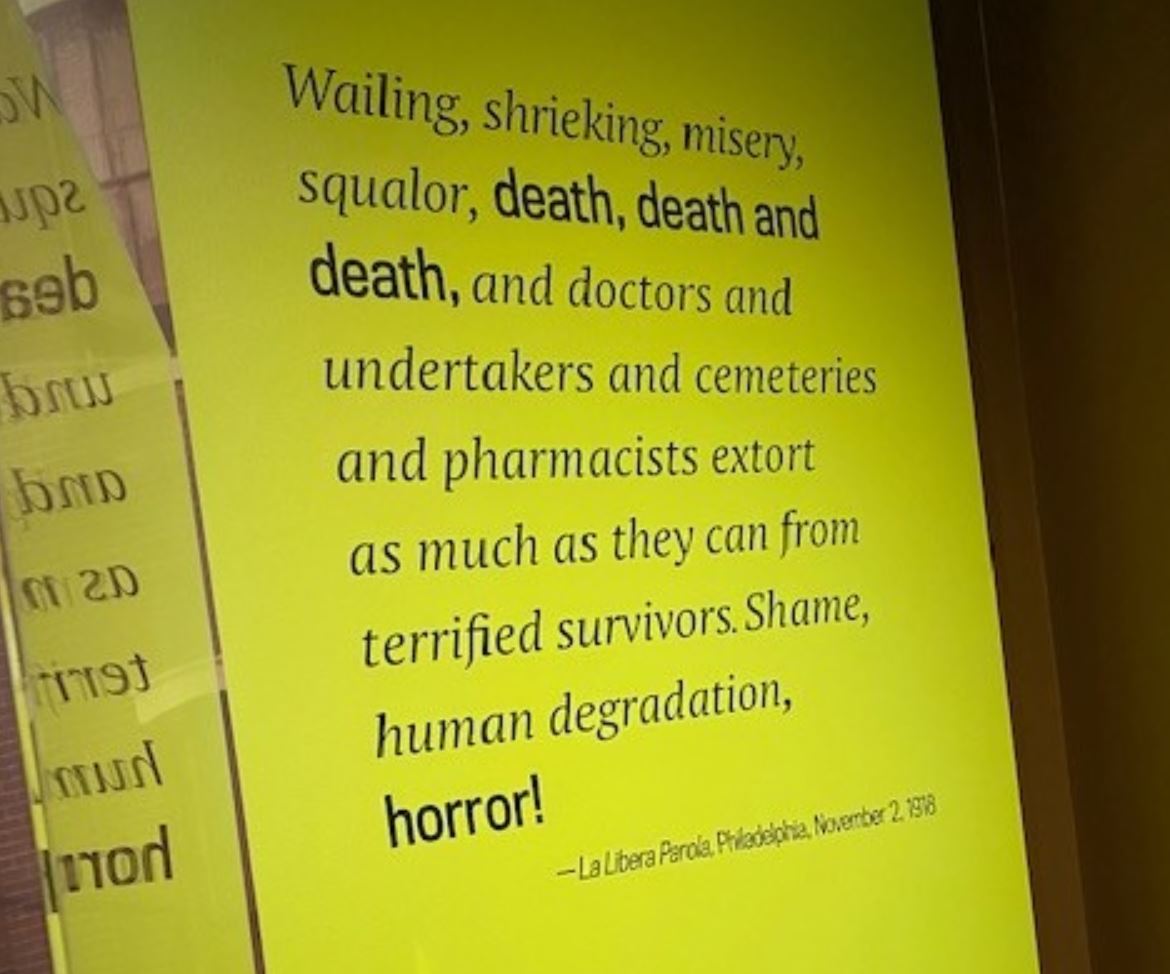One of the special exhibits currently on display is titled, Spit Spreads Death: The Influenza Pandemic of 1918-19 in Philadelphia. The name for the exhibit, “Spit Spreads Death” stems from the public health campaign in Philly during the Spanish flu, which fined people who spit on the sidewalks, as they believed that that was assisting in the spread of the disease. Ironically, the exhibit was planned prior to the outbreak of the COVID-19 pandemic but now its focus on the Liberty Loan Parade, essentially the Spanish flu in Philadelphia’s “superspreader event”, is all too timely. The parade, a WWI patriotic effort, resulted in rapid spread of the disease, which quickly overwhelmed local hospitals and killed 12,000 people in the first 6 weeks. Philadelphia ended up suffering the highest death toll of any American city.
 As part of the exhibit, the Mütter Museum hosted a parade commemorating the lives lost in the city during the 1918 pandemic. Luckily, the parade was held in September 2019, prior to the widespread outbreak of the Coronavirus in the US, but eerily just months away from being a disastrous repeat of history.
As part of the exhibit, the Mütter Museum hosted a parade commemorating the lives lost in the city during the 1918 pandemic. Luckily, the parade was held in September 2019, prior to the widespread outbreak of the Coronavirus in the US, but eerily just months away from being a disastrous repeat of history.
The rest of the museum features the specimen collection in a cabinet format. Some of the highlights include Albert Einstein’s brain, Grover Cleveland’s jaw tumor, a very large collection of human skulls, and a plaster cast and conjoined liver of “Siamese twins” Chang & Eng. In addition to the skeletons, you’ll also find a vast collection of “wet specimens”, which are things like tumors, cysts, and body parts preserved in fluid, something the histologist is all too familiar with!
Maintaining this fragile collection, whose earliest specimen dates back to the seventh century BCE, is no easy task. On July 28th, Collections Manager & Registrar for the Mütter Museum, Lowell Flanders, MA, will be presenting a webinar, The Mütter Museum: Overview and Conservation Primer, which will discuss the history of the museum and the histology and pathology necessary to preserve this fascinating collection. Register your lab for this disturbingly informative webinar to earn 1 CEU.
If you’re interested in visiting the Mütter Museum you can find info on their website.